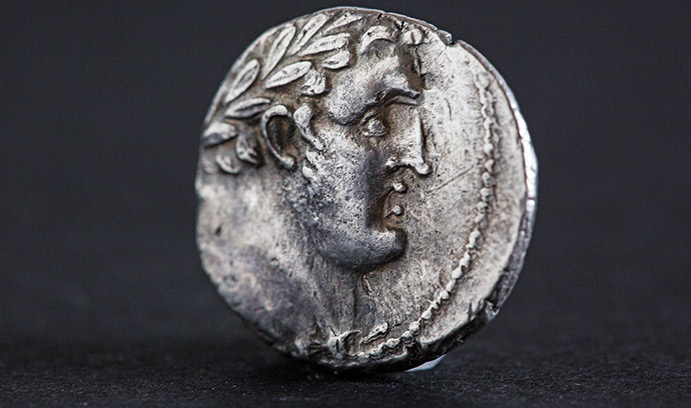A High-Tech Peek at Roman Coins

Using the most advanced techniques for analyzing the surfaces of materials, a team of researchers has shed light on the coin-making practices of the Roman Empire and the manner in which Roman coins have corroded over the past 2,000 years.
The study by chemical engineers and materials scientists demonstrated that low-energy ions, x-rays and laser lights can be used to analyze archaeological objects without damaging them. And it yielded clues about the environment to which the coins, and the people who handled them, were exposed.
The group studied five Roman coins and reported its findings in the journal Applied Surface Science. The researchers included Israel E. Wachs, the G. Whitney Snyder Professor of chemical and biomolecular engineering; Michael R. Notis, professor emeritus of materials science and engineering; and Christopher J. Keturakis ’09 ’15 Ph.D.
The researchers used three surface spectroscopic techniques to determine the composition of the outer layers of the coins, where corrosion occurs. One technique, high sensitivity-low energy ion scattering (HS-LEIS) spectroscopy, had not previously been used to examine archaeological objects. The method had been considered destructive, but the researchers overcame this by utilizing modern high sensitivity analyzers that require about 3,000 times fewer ion-surface collisions to collect data.
The researchers found potassium, sodium, chlorine and sulfur to be “key corrosion components” for all five coins, with sulfur concentrated near the surface and chlorine occurring at greater depths. The absence or presence of elements, said Wachs, reflects the “corrosion environments” from the coins’ contact with humans, shells, sand, pottery, wood and other sources.
The researchers also found that some of the coins contained lead, resulting from the coin production process, at the surface layer. Wachs said this means that the people who handled the coins in ancient times were directly exposed to lead, a potent neurotoxin.
The researchers believe the advanced surface-analysis techniques they employed could help improve the preservation of ancient artifacts.
Posted on:

